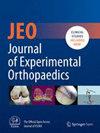In rotator cuff tears, scapular dyskinesis is often observed. The aim of our study is to better understand the cause and the role of scapular dyskinesis in rotator cuff tears and evaluate changes in scapulothoracic kinematics after Lidocaine subacromial injection and surgery in patients with medium-sized (1–3 cm) rotator cuff tear.
The scapular motion during humerus sagittal flexion of nine healthy persons (healthy group, HG) and nine persons with a medium-sized rotator cuff tear (surgery group, SG) was investigated using the VICON motion capture system and upper limb evaluation in movement analysis software. In addition, quality of life and functional outcomes were assessed in the SG group using American Shoulder and Elbow Surgeons, Oxford and Constant-Murley scores and rotator muscle force and Visual Analogue Scale score were evaluated. The SG was further divided into three subgroups: measurements were performed preoperatively (before surgery native subgroup—BSN), then after subacromial Lidocaine injection (before surgery injection subgroup—BSI) and 6 months after rotator cuff reconstruction (after surgery subgroup—AS). Changes observed after injection (BSI) and surgery (AS) were compared to the BSN.
In the BSI, a significant reduction (p < .025) in protraction was observed in the raising phase between 20° and 70° comparing it to the BSN, protraction decreased by 5.3° ± 7.9° (mean ± standard deviation [SD]). In the lowering phase between 80° and 30°, we registered a decrease of protraction by 6.0° ± 8.3° (mean ± SD). In the AS, we observed an approximation of protraction to the HG, but no significant change was detected.
Significant reduction in scapular protraction was demonstrated with Lidocaine subacromial injection during both the arm raising and lowering phases. Six months of rehabilitation treatment in the postoperative period is not enough to fully eliminate scapular dyskinesis.
Level II.



